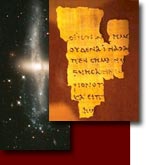| Site Map | Contacts | Links | Newsletter | |
Genesis:
Genesis 11-12 - Where was Abraham's Ur?
Abraham was from the city of Ur according to Genesis 11:31. The problem is that there are several places called Ur. It is identified as "Ur of the Chaldeans." The problem with "Chaldeans" is that it is a late word used in the Neo-Babylonian times. It is either anachronistic, or this part of Genesis was written after the Exile.
There is no debate over where Haran is located, 10 miles north of the Syrian border in Turkey along the Balikh River, a tributary of the Euphrates River. Haran is an important Hurrian center, mentioned in the Nuzi tablets. The moon god, Sin was worshiped here. If Ur were located in Southern Iraq, why would Abraham travel 60 miles way out of his way to go to Haran?
There are two cities not far from Haran; Ura and Urfa. Local tradition says that Abraham was born in Urfa. Northern Ur is mentioned in tablets at Ugarit, Nuzi, and Ebla, which refers to Ur, URA, and Urau (See BAR January 2000, page 16).
The names of several of Abraham's relatives like Peleg, Serug, Nahor and Terah, appear as names of cities in the region of Haran (Harper's Bible Dictionary, page 373). Abraham sent his servant back to the region of Haran to find a wife for Isaac (Genesis 24:10).
After working for Laban, Jacob fled across the Euphrates River back to Canaan (Genesis 31:21). If Ur were in Southern Mesopotamia, then Jacob would not need to cross the Euphrates. Laban is said to live in Paddan-Aram, which is in the region of Haran (Genesis 28:5-7), which seems to be the same area as Aram-Naharaim, Abraham's homeland (Genesis 24:10).
All this evidence taken together seems to indicate that the Ur of Abraham was in the same region as Haran in Northern Mesopotamia, and not the famous Ur in Southern Mesopotamia.
Next - Genesis 18-19 - Sodom & Gomorrah
Bibliography
